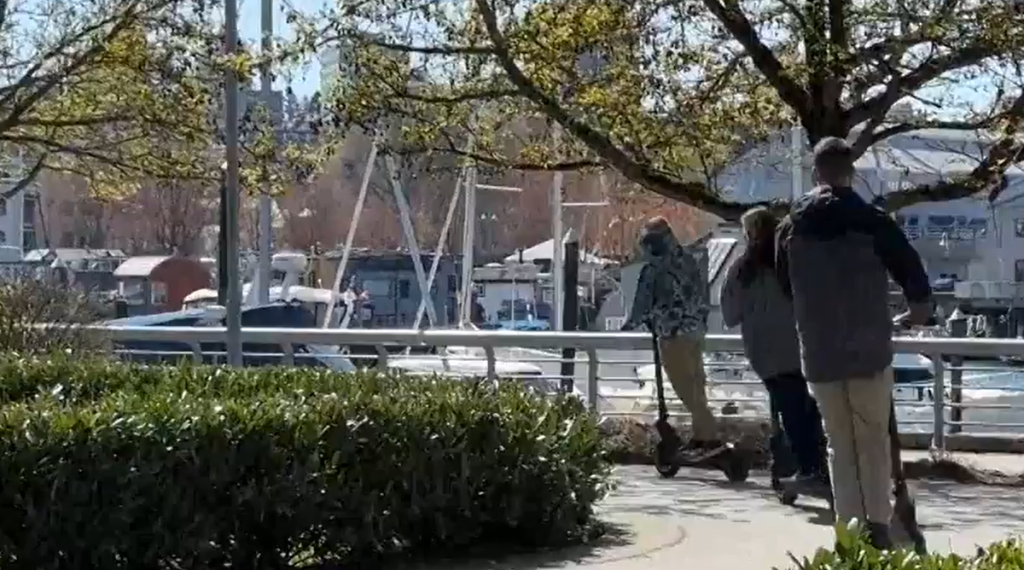David Jacobson: Port report ‘good news’ for Canada, encourages competition
Posted July 27, 2012 6:17 pm.
This article is more than 5 years old.
WASHINGTON – The U.S. ambassador to Canada is praising a report by an American agency even as two of its commissioners take public issue with the study that examined Canadian “cargo diversion” and cited suggestions to remedy the problem that could prove prohibitively costly to importers.
The report by the five-member Federal Maritime Commission is complimentary to Canada while fully advocating healthy competition among ports in the U.S., Canada and Mexico, David Jacobson said from Ottawa in an interview with The Canadian Press.
“It emphasizes the need for competition … from where I’m sitting, I read this as good news for Canadian ports,” he said.
Two commissioners, however, disagree.
Rebecca Dye and Michael Khouri released statements Friday that are starkly critical of the agency’s study into allegations from two Washington state senators that Canada was luring lucrative cargo away from U.S. West Coast ports.
“I believe the study fails to assist or advance meaningful discussion or debate concerning either the federal HMT or the broader subject of a national transportation policy,” Khouri said in his statement.
Of particular concern to Dye was the suggestion that the port of Prince Rupert, B.C., lacks the type of security available at other destinations, including American ones, because it is not a so-called “CSI” port.
CSI is an acronym for the Container Security Initiative, a program implemented 11 years ago by U.S. Customs and Border Control to pre-screen more than 86 per cent of U.S.-bound container cargo.
“Vancouver, Montreal and Halifax are CSI ports; Prince Rupert is not,” reads the report.
Dye said the point was a silly one to raise, while a Canada-U.S. trade expert called it a potentially dangerous “red herring.”
“While the Container Security Initiative was begun in the fall of 2001, the Port of Prince Rupert did not begin operations until 2007,” Dye said in her statement. “Ports were selected for the Container Security Initiative according to greatest volume of cargo destined for the United States.”
Canadian port security practices are airtight, she said, with all U.S.-bound cargo arriving in Canada screened via radiation at the port, and then screened again when it crosses the border via Canadian railways.
Prince Rupert, Dye also noted, is a key player in the Canada-U.S. Beyond The Border initiative.
“The Beyond the Border Action Plan … selected Prince Rupert for a pilot project for a Cargo Targeting Initiative, which will involve perimeter vetting and examination of inbound marine cargo at the port and destined for Chicago by rail.”
But Jacobson objected strenuously to any suggestion the commission was raising concerns about security at Prince Rupert. The study was simply making a factual statement by mentioning that Prince Rupert wasn’t a CSI port, he said.
“It did not question the security of Prince Rupert; it did not, full stop,” he said.
The report, to be delivered to Congress, divided the panel’s members down party lines. The two Republicans voted against its release, questioning its methodology and finding it too negative toward Canadian port authorities, and the three Democrats voted to sanction it.
Richard Lidinsky, the commission’s chairman, said in a news release that the report provides Congress with a wealth of information.
“This study provides facts U.S. policy makers can rely upon as they make the important choices affecting this country’s ability to compete in a global transportation marketplace,” he said.
The report suggested that Congress should consider doing away with or restructuring the U.S. Harbor Maintenance Tax, saying it plays a significant role in why importers choose Canadian ports for their U.S.-bound cargo.
It also made clear that importers opting to ship their U.S.-bound cargo to Canada weren’t breaking any laws or regulations.
Jacobson said he wasn’t concerned that a hyper-partisan Congress might make political hay out of elements of the report just four months before the presidential election.
“I long ago gave up trying to predict what Congress might do …. but I am not troubled by that at all,” he said.
But Canada-U.S. trade expert Don Alper says the report could be interpreted by Congress as a call for action — including introduction of legislation that could be punitive to Canadian port authorities.
“You get Congress going on these things, especially when you throw in security concerns, and you don’t know where it’s going to end up,” said Alper, the director of the Center for Canadian-American studies at Western Washington University in Bellingham, Wa.
“Bringing up security at Prince Rupert was a dumb red herring — that has nothing to do with the Harbor Maintenance tax …. It seems to me the inquiry started in the first place for purely political reasons, when politicians were trying to protect their home industries and their job base and their re-election prospects.”
In its suggestions on how Congress could proceed, the report also made mention of a proposal from a former commission chairwoman, Helen Bentley.
Earlier this year, Bentley said the Harbor Maintenance Tax should be replaced with a US$100 fee imposed on every cargo container entering the U.S. from a Canadian port.
That would essentially make Canada a no-man’s land for many importers.
The study caused serious dissent among its members for good reason, a source close to the commission said: The final report is obscure, misleading and risks causing tension in the Canada-U.S. trade relationship at a crucial period in its history.
“This is a trade issue with the Canadians; this is not a maritime port issue, so they should have had the insight to realize that,” the source said.
“We’re right in the middle of Beyond the Border, and Keystone, and this is what they came up with? They didn’t consider the context in which this would be received.”
In her statement, Dye didn’t pull any punches.
“The ‘study’ we have submitted to Congress is a political policy paper,” she wrote.
Dye suggested it was flawed from the start, since it is based on an unsubstantiated foregone conclusion that the Harbor Maintenance tax causes cargo diversion from the U.S. to Canada.
But Dye said only a dozen experts who made a total of 76 submissions to the commission agreed that the tax plays a major role in cargo diversion to Canada, a phenomenon she characterized as vastly overstated anyway. Khouri agreed.
Many other far more significant factors are at play when an importer decides whether to ship to Canada or the United States, Dye said — chief among them “individual port efficiency and reliability.”
She also noted that a minuscule amount of U.S. bound cargo enters via Canadian ports, as little as 1.3 per cent of total American port traffic.
“The small percentage of U.S. cargo imported via Canadian ports is obscured in the commission study by implications regarding the potential for future changes in the flow of cargo through North American ports,” she said.
“The commission should have clarified the facts in the study related to the flow of cargo through North American ports for members of Congress and the maritime industry.”
A spokesman for CN Rail welcomed some of the report’s finding while acknowledging the issues raised by Dye and Khouri.
“With all due respect to the FMC, CN believes businesses know the reasons for their business decisions best and thus have clear economic reasons for citing the advantages of Prince Rupert’s geographic location and cargo velocity for their port choice,” said Mark Hallman.
The unhindered flow of cargo though Canadian ports to U.S. destinations, and vice versa, is “an issue of North American trade and competitive choice in the transportation market,” he added.
Congress asked the Federal Maritime Commission last year to probe allegations about Canada’s port practices after complaints from Sens. Patty Murray and Maria Cantwell. The senators urged the commission to launch the inquiry last fall, and soon had the support of several lawmakers in the House of Representatives.










